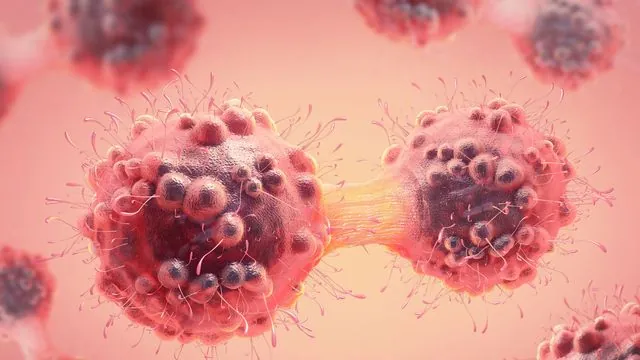
Revolutionary Cancer Treatment: Genetically Modified Fat Cells Starving Tumors
2025-03-28
Author: Nur
Introduction
Recent advancements in cancer therapy could lead to a groundbreaking approach where genetically engineered fat cells target and starve tumors by competing for essential nutrients. This innovative strategy holds promise for new cellular therapies aimed at combating various types of cancer.
Research Findings
Researchers recently published findings in *Nature Biotechnology*, detailing how they engineered white fat cells—the predominant type of fat in the human body—to aggressively absorb glucose and fatty acids. In controlled experiments with mice, tumors implanted near these modified fat cells exhibited significantly slower growth compared to those in mice without the intervention.
Statement from Lead Investigator
Dr. Nadav Ahituv, the lead investigator from the University of California, San Francisco (UCSF), commented, “We believe the engineered cells outcompete tumors for vital nutrients, hindering cancer cell proliferation.” This newly proposed treatment, termed Adipose Manipulation Transplantation (AMT), marks a pivotal shift in how cellular therapies may evolve, potentially changing the landscape of cancer treatment.
Comparison with Existing Treatments
Current treatments like CAR T-cell therapy harness a patient's own immune cells, enhancing them to combat cancer. AMT, however, takes a unique route—utilizing modified adipose (fat) cells from the same patient. This raises the intriguing possibility of a customized therapy that minimizes immune system rejection, as the cells are derived from the patients themselves.
Gene Editing and Cancer Types
Using a powerful gene-editing tool known as CRISPRa, researchers effectively transformed standard white fat cells into beige fat cells, which are known for their energy-consuming capabilities. When tested against various cancer types, including breast, pancreatic, colon, and prostate cancers, these modified fat cells exhibited a remarkable ability to slow tumor growth.
Nutrient Targeting
An additional breakthrough from the study involved tweaking the fat cell engineering to consume specific nutrients, such as uridine, crucial for the growth of pancreatic tumors. Traditional treatments focus on directly destroying cancer cells, while AMT represents a more strategic, non-toxic approach that disrupts tumor growth by outcompeting cancer cells for critical sustenance.
Previous Findings
This progress builds on previous findings indicating that brown fat activation through cold exposure could slow tumor growth, leading researchers to explore fat cells' potential in cancer therapies without needing cold conditions.
Potential and Challenges
Dr. Ahituv emphasized, “Fat cells, often overlooked in disease treatment, possess unique attributes that can be harnessed therapeutically.” The active role of fat cells in the endocrine system may also provide beneficial substances to combat various diseases.
The strategy hinges on a notable genetic modification that activates the UCP1 gene, typically dormant in white fat cells but active in brown fat cells, enabling dramatic nutrient consumption changes. Tests conducted in sophisticated three-dimensional tumor models showed consistent success, portraying the engineered cells as "energy vacuums" that deplete tumors of their fuel.
Dietary Influence
However, the approach encountered challenges; the effectiveness of AMT diminished in mice fed high-fat or high-glucose diets, corroborating the notion that competition for limited nutrients is vital for its success. This emphasizes the influence of dietary factors on treatment outcomes.
Research and Future Directions
A key component of the research involved creating biocompatible scaffolds for the engineered fat cells, allowing controlled implantation and retrieval from mice, facilitating potential clinical application in humans.
Despite the promising results, Dr. Ahituv notes that further research is essential to refine the engineered fat cells and clarify the underlying mechanisms at work. Critical questions remain about the longevity of the fat cells' effectiveness and whether cancer cells might develop resistance by finding alternative nutrient sources.
Broader Implications
As scientists continue to unravel the potential of AMT, they are also considering its implications for other health conditions such as diabetes. “We hope this technology will be expanded and applied in numerous ways,” Dr. Ahituv stated, looking forward to forthcoming innovations in this promising field of medical research.
Conclusion
Stay tuned, as this pioneering approach could redefine the fight against cancer and provide new hope for countless patients worldwide!


 Brasil (PT)
Brasil (PT)
 Canada (EN)
Canada (EN)
 Chile (ES)
Chile (ES)
 Česko (CS)
Česko (CS)
 대한민국 (KO)
대한민국 (KO)
 España (ES)
España (ES)
 France (FR)
France (FR)
 Hong Kong (EN)
Hong Kong (EN)
 Italia (IT)
Italia (IT)
 日本 (JA)
日本 (JA)
 Magyarország (HU)
Magyarország (HU)
 Norge (NO)
Norge (NO)
 Polska (PL)
Polska (PL)
 Schweiz (DE)
Schweiz (DE)
 Singapore (EN)
Singapore (EN)
 Sverige (SV)
Sverige (SV)
 Suomi (FI)
Suomi (FI)
 Türkiye (TR)
Türkiye (TR)
 الإمارات العربية المتحدة (AR)
الإمارات العربية المتحدة (AR)